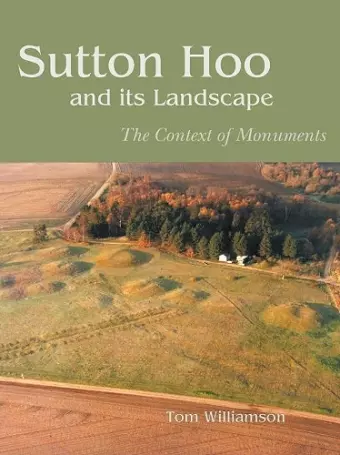Sutton Hoo and its Landscape
Format:Paperback
Publisher:Windgather Press
Published:2nd Dec '08
Currently unavailable, our supplier has not provided us a restock date

The location of the Anglo-Saxon burial ground at Sutton Hoo, on a ridge overlooking the estuary of the river Deben, has always appeared strange and challenging. This is not so much because the site is today an isolated and lonely one, but rather because it lies on the very periphery of the early medieval kingdom of East Anglia, whose rulers - the Wuffingas - were buried there. In this extended meditation on the geography of a very special and evocative place, Tom Williamson explores the meaning of the cemetery's location. To understand the location of ancient monuments we need to examine not only the character of past landscapes, but also the ways that contemporaries may have experienced and felt about them: we need to reconstruct aspects of their mental world. Williamson argues that the cemetery was placed where it was not in order to display power and dominance over territory, but because the river, and its brooding estuary, had long held a special and central place in the lives and perceptions of a local society. As King Raedwald and his family rose to dominance over this river-people, they chose to be buried at the heart of their territory. Such approaches may help us to understand why the cemetery was established where it was within the territory of the Wuffingas : but they cannot explain why that group came to dominate the whole of East Anglia. For this, Williamson argues, we need to examine wider geographical contexts - patterns of movement, contact, and social allegiance which were engendered and shaped by landforms and topography at a regional and national level. It is only by joining aspects of the new 'phenomenological' approaches to the archaeology of landscape, to more traditional geographical interpretations, that we can appreciate the full significance of this important site. Combining a keen understanding of local and regional geography, Anglo-Saxon history, and current debates about approaches to past landscapes, this book is a masterly exploration of the context and meaning of an iconic set of monuments.
...considers the landscape setting--both the immediate and the wider setting--more thoroughly than ever before and a provides a starting point for yet further discussion. It deserves to be taken seriously by all those wishing to add to the volume of research on this particular site or to understand Anglo-Saxon territorial arrangements in general, with any corresponding settlement and land use change. * The Medieval Review *
A well researched, accessible and wonderfully stimulating read... a worthy addition to Anglo-Saxon scholarship. * Finds Research Group Newsletter *
...accessible and stimulating text, with concise and academically referenced argument. Because of its pre-eminent subject matter, its insights and conclusions make it essential reading for both student and expert alike. * Journal of Medieval Archaeology, vol 53 *
innovative and fascinating... essential reading for students of Sutton Hoo, early medieval archaeology and landscape archaeology. * Early Medieval Europe *
The author enriches his readers experience of the landscape, as well as their vocabulary. The colour photographs are superb. * Speculum, vol 85, No. 3 *
All told, this is an excellent illustration of what good landscape archaeology and textual analysis can achieve, in the hands of a master practitioner, to make new suggestions about people, monuments, and artifacts on the very margin of history. * The Oxford Art Journal *
ISBN: 9781905119257
Dimensions: unknown
Weight: unknown
220 pages